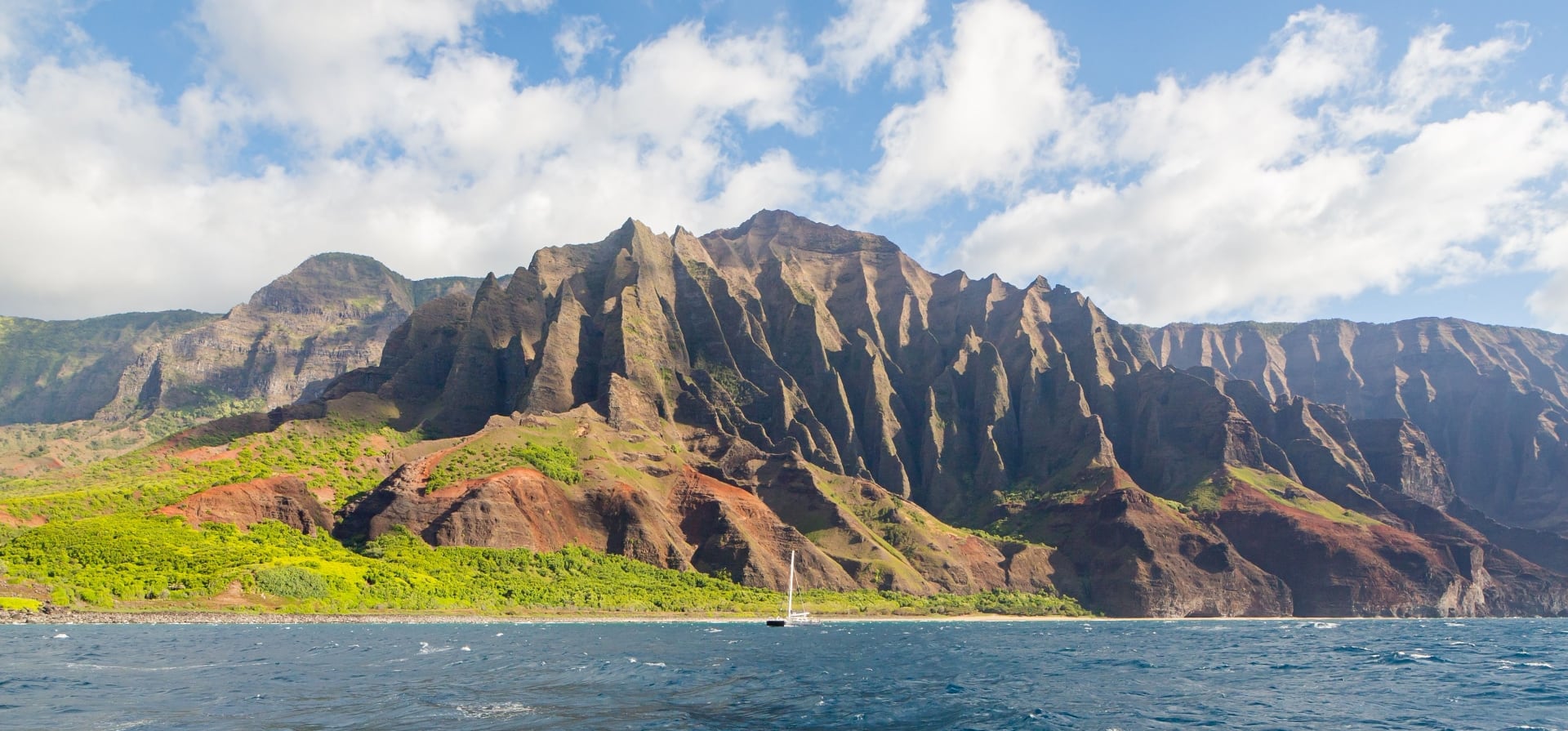
The Hawaiian History of Na Pali Coast
Over five million years ago magma from a hot spot beneath a floating Tectonic plate burst forth spewing the volcanic lava which formed the island of Kauai. Over the course of millions of years, the land was seeded with plant life by birds and the vegetation that washed upon its shores. By the time humans migrated to the island, an estimated 1,300 native flowering plant species were thriving. Today, approximately more than 80% of Kauai's rare native species are endangered.

Polynesian Navigators
Navigating double-hulled outrigger sailing canoes across more than 2,000 miles of ocean, early Polynesians used the constellations to help them arrive to Kauai's Na Pali coast. It is estimated the first occupants came to this remote stretch around 1,200 AD. Over hundreds of years, Tahitians began migrating to Kauai, becoming the dominant people influencing religion and culture. Their impact became the basis of Hawaiian society.
Na Pali - A Natural Fortress
Because of the remote location of the coastline, only accessible by water or strenuous foot trails, the people that lived in these valleys were well protected. Outrigger canoes provided convenient travel by water in the summertime's small surf. Over hundreds of years, Polynesians, and eventually the Tahitians, migrated to Na Pali by canoe, bringing influences that became the basis of Hawaiian culture. Outrigger canoes are still a part of Hawaiian culture today.
Fishing and Farming
With abundant rivers and flowing waterfalls, fresh water was in plentiful supply. Fish, as well as Kalo, or taro, provided sustenance along with sweet potatoes and breadfruit, which were cultivated through sophisticated irrigation systems in hanging valleys and along the shorelines. The small ruling class of ali`i (royalty) held the power and enjoyed any luxuries that may have come from a lifestyle that was demanding for most living on the isolated Na Pali.
Hawaiian Life
This coastal region was known as a central location for commerce between Hanalei, Waimea and Ni`ihau, as well as the western islands of the Hawaiian archipelago. Trade was done via canoe and various foot trails that rose up to 4,000 feet in some valleys. Traces of this lifestyle still remain today in the rock walls and terraces found in places along the Na Pali, like Nu`alolo Kai. Exploration of Nu`alolo is by permit only and accessible solely by boat. Visitors can discover restored archeological sites and snorkel the sheltered reef that once sustained the lives of the ancient Hawaiians.
Western Contact
Because Hawaiian history was passed down orally, there is no written record of how many lived along the Na Pali before Western contact. It has been said that anywhere from a few hundred to a few thousand flourished on this coast before Captain Cook's "discovery" of Kaua`i in 1778. In 1821, one of the earliest written records of the Na Pali documents seeing approximately 70 inhabitants fishing along the shoreline of Nu`alolo Kai. Several hundred are believed to have been occupying Kalalau Valley. Foreign influences brought diseases that decimated the Hawaiian population on the Na Pali and throughout the Hawaiian islands. As an influx of missionaries began infiltrating Kauai in the 1820's, nudity, hula and other Hawaiian traditions were banned. This began a steady decline of Hawaiian culture, and eventually cattle ranching and the lure of an easier lifestyle drew many away from the remote Na Pali. The final Hawaiians left the region sometime at the beginning of the 20th century.